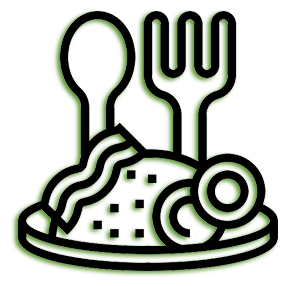
10 Oct WHEN YOU SHOULD EAT THE BIGGEST MEAL OF THE DAY
When it comes to the biggest meal of the day, America has it wrong. You’ve heard it before, but saving your largest meal for dinner isn’t doing your medical weight loss plan any favors. You may know where this is going next, but your biggest meal of the day should come soon after you rise and shine. You guessed it; Breakfast wins the meal war again.
But until recently, few studies have examined the relationship between the time of day you consume your most essential nutrients and obesity. But why does breakfast always come out on top?
For starters, when you wake up, you haven’t eaten for about eight hours, so your body is ready for fuel to give you energy throughout the day. However, more recent research studied the difference in weight loss between women who ate a big breakfast compared with women who ate a large dinner.
One group of overweight or obese women ate a 700-calorie breakfast, a 500-calorie lunch, and a 200-calorie dinner. The other group ate a 200-calorie breakfast, a 500-calorie lunch, and a 700-calorie dinner. The results showed those who ate a bigger breakfast lost more weight, reduced belly fat, and felt less hungry throughout the day than those who ate a larger dinner.
Don’t be fooled by the perception that skipping breakfast saves calories. Although a 700-calorie breakfast is steep if you’re really focused on losing weight, it should still be the largest meal of your day. Stay near the 400-calorie range to maximize your success. Kick-start your day with one of these guaranteed meals to put you on the path toward weight loss success.
Veggie omelet: Start with two eggs, then mix in your favorite veggies (onions, red peppers, spinach, mushrooms, etc.). Eggs are chock-full of essential nutrients including a hefty dose of protein, and veggies will contribute an adequate dose of fiber and vitamins. Power breakfast coming right up!
Greek yogurt with mixed berries: Choose your favorite antioxidant-filled berry, and mix with plain Greek yogurt for a delicious breakfast treat. The sweet fruit mixed with tart yogurt has a dessert-like feel but is a great way to start your day! Not to mention you’ll get a hefty serving of protein and gut-cleansing probiotics too.
Whole-wheat toast with almond butter: Almond butter is very similar to peanut butter with slightly less saturated fat. It clocks in at about 100 calories per tablespoon and is packed with healthy, monounsaturated fats and proteins. Spread on a piece of whole-wheat toast, topped with slices of banana for a touch of sweetness to hold you over until your next meal.
Smoothie: A smoothie makes an excellent meal, not a midday snack. Make sure you include a protein. Try avocado, plain kefir, low-fat yogurt, or one serving of peanut butter. Blend with your favorite fresh or frozen fruit for a refreshing and filling meal.


